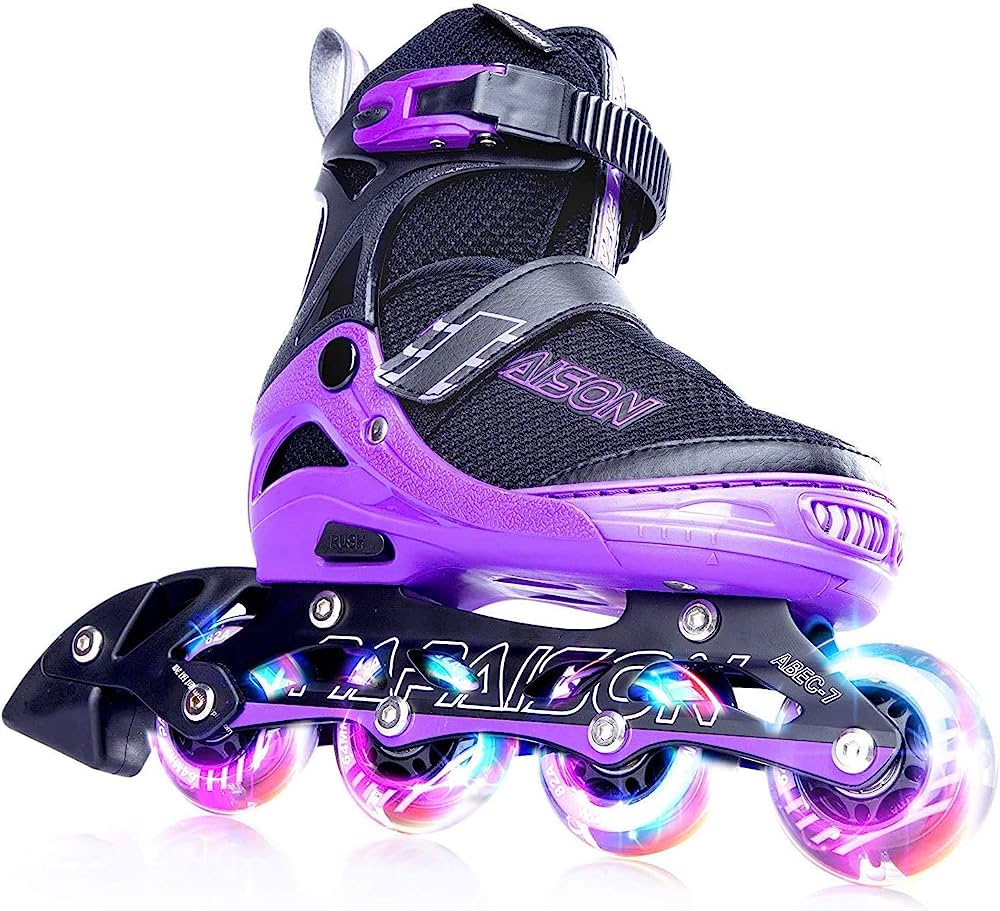
Inline skating is a fun, healthy activity for kids that can help improve their balance, coordination, and cardiovascular health. However, choosing the right inline skates for kids can be a challenge, as there are many factors to consider. In this article, we’ll explore some tips and tricks for choosing the right inline skates for kids.
Size
The first factor to consider when choosing inline skates for kids is size. It’s important to choose skates that fit properly, as ill-fitting skates can cause discomfort, pain, and even injury.
To find the right size skates for your child, measure their feet from heel to toe and consult the manufacturer’s sizing chart. Keep in mind that different brands may have slightly different sizing charts, so it’s important to consult the specific chart for the brand of skate you’re considering.
It’s also important to consider the width of your child’s feet when choosing skates. If your child has wider feet, you may need to choose skates with a wider footbed or look for skates that are specifically designed for wider feet. On the other hand, if your child has narrow feet, you may need to choose skates with a narrower footbed or consider adding extra padding to the skate liners.
Support
Another important factor to consider when choosing inline skates for kids is support. Kids’ feet are still developing, so it’s important to choose skates that provide good support for their ankles and feet.
Look for skates with a high-cut or mid-cut boot that provides good ankle support. The boot should fit snugly around the ankle without restricting movement or causing discomfort.
Some skates also come with additional support features like straps or buckles that provide extra support and stability. These features can be especially helpful for kids who are just starting out with inline skating.
Wheel size and hardness
Wheel size and hardness are also important factors to consider when choosing inline skates for kids. The size and hardness of the wheels can affect the speed, stability, and maneuverability of the skates.
For younger kids or beginners, smaller wheels are generally a better choice. Smaller wheels provide more stability and control, making it easier for kids to learn and develop their skills.
The hardness of the wheels is also important to consider. Softer wheels provide more grip and are better for outdoor surfaces like pavement or concrete. Harder wheels provide less grip but are better for indoor surfaces like wood or tile.
Brake
The brake is an important safety feature on inline skates, especially for kids who are just starting out. Look for skates with a reliable and easy-to-use brake that allows your child to stop quickly and safely.
The most common type of brake on inline skates is the heel brake, which is located on the back of the skate near the heel. Some skates also come with alternate braking systems like the T-stop or power slide.
It’s important to teach your child how to use the brake properly and practice stopping techniques in a safe, controlled environment.
Durability and maintenance
Finally, it’s important to consider the durability and maintenance of the skates when choosing inline skates for kids. Kids can be rough on their gear, so it’s important to choose skates that can withstand wear and tear.
Look for skates with durable materials like reinforced plastic or metal frames. The wheels should also be made of high-quality materials that can withstand repeated use.
Regular maintenance is also important to keep the skates in good condition. Make sure to clean and lubricate the bearings regularly and replace any worn or damaged parts as needed.
Conclusion
Choosing the right inline skates for kids is an important decision that can greatly impact their safety and enjoyment. Factors like size, support, wheel size and hardness, brake, and durability and maintenance should all be considered when selecting skates for your child. By taking the time to research and invest in high-quality skates, you can help your child develop their skills and enjoy a safe and rewarding inline skating experience.

